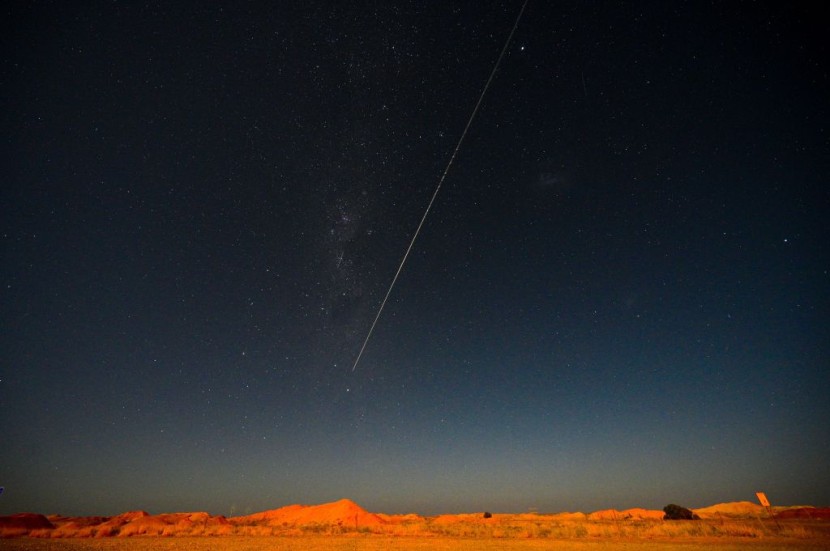
Spectators from Earth on Thursday will be able to witness the passing of a gigantic asteroid with a width that could be more than double the height of the Empire State Building and will have a companion that could be even larger.
The first cosmic object, known as asteroid 418135 (2008 AG33) has an estimated size of between around 1,150 and 2,560 feet. Experts said that it will speed past Earth at roughly 23,264 miles per hour on Thursday. A few days after the asteroid passes by our planet, another asteroid, which experts estimate could be even larger than the first, will also be visible from Earth.
Massive Asteroids
The second cosmic object, known as asteroid 467460 (2006 JF42), is believed to make its closest approach on May 9, 2022. Experts estimate the size of the asteroid to be between 1,247 and 2,822 feet. This means that it could potentially be as wide as two and a half Empire State Buildings, as per Newsweek.
Furthermore, the second asteroid will not only top the first one in size but also beat it in terms of speed as it is estimated to be traveling at roughly 25,277 miles per hour. It is twelve and a half times faster than a bullet fired by a rifle, 17 times as fast as a jet fighter, and 1,000 times as fast as Usain Bolt, who is considered to be the greatest sprinter of all time.
While the asteroids will fortunately not collide with Earth, such an impact would bring widespread devastation to our planet. In the past month, experts have already observed two asteroids striking our planet, the most notable of which was 2022 EB5. They were relatively small and caused little to no damage to the environment.
According to Mashable, earlier this month, NASA's Jet Propulsion Laboratory (2204 FG11) also monitored three asteroids labeled 2022 GU2, 2022 GD3, and asteroid 363599. The first two asteroids were relatively minor space rocks but the third was a 210-meter-wide apollo-class asteroid. It was identified as a potentially hazardous asteroid because of its size and proximity to our planet.
Close to Earth
NASA estimated that asteroid 418135 will fly past the Earth at a distance of roughly 3.24 million kilometers. Put into perspective, our Moon orbits the planet at a distance of roughly 384,000 kilometers. This means that the asteroid will be located at a considerably farther distance compared to nearby cosmic bodies. However, on a cosmic scale, it is still considered relatively close.
The space agency has predicted that the Earth is at no risk of being struck by any asteroids in the coming century. But an object as large as asteroid 418135 could devastate entire continents and cause severe cataclysms across the globe.
As our technology is not sufficient to prevent the catastrophes that could be brought by asteroid impacts, experts are discussing the issue worldwide. There have been several promising initiatives proposed, such as NASA's Double Asteroid Redirection Test (DART) Mission. It seeks to use a small specially-designed spacecraft to fly into an asteroid and see if it can slightly alter its trajectory, the Jerusalem Post reported.
Related Article: Astronomers Detect Micronova Explosions on Dead Stars That Have Been Occurring for Eons
© 2025 HNGN, All rights reserved. Do not reproduce without permission.








